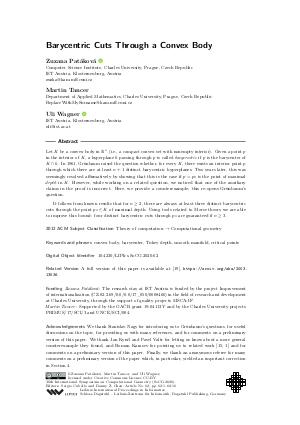LIPIcs.SoCG.2020.62.pdf
- Filesize: 0.71 MB
- 16 pages

 Creative Commons Attribution 3.0 Unported license
Creative Commons Attribution 3.0 Unported license















Feedback for Dagstuhl Publishing